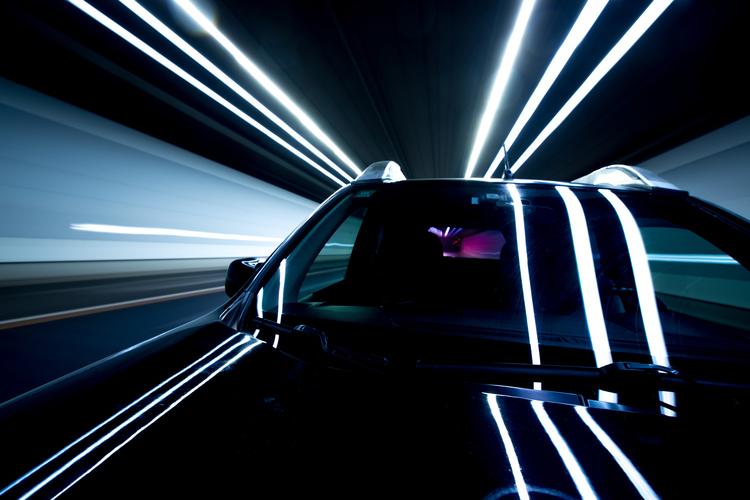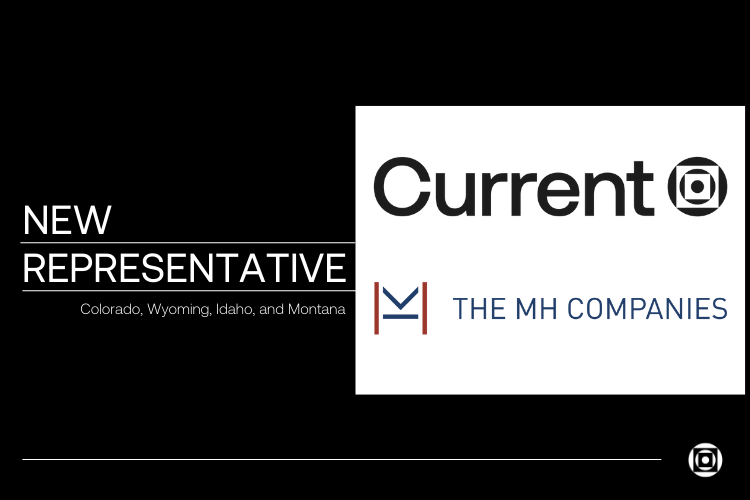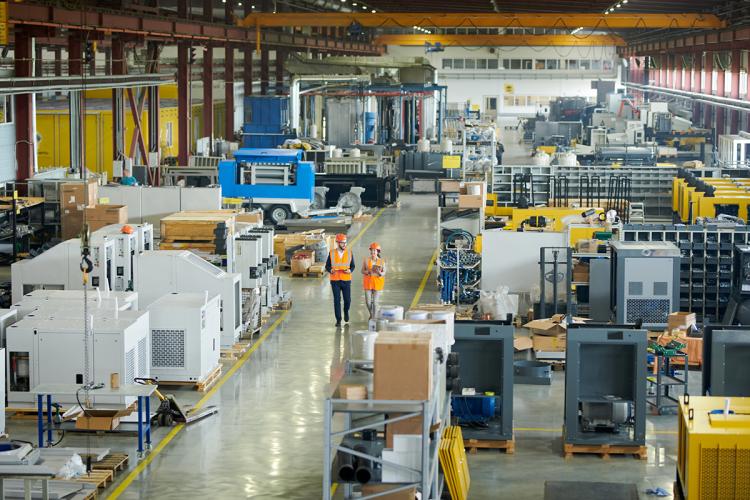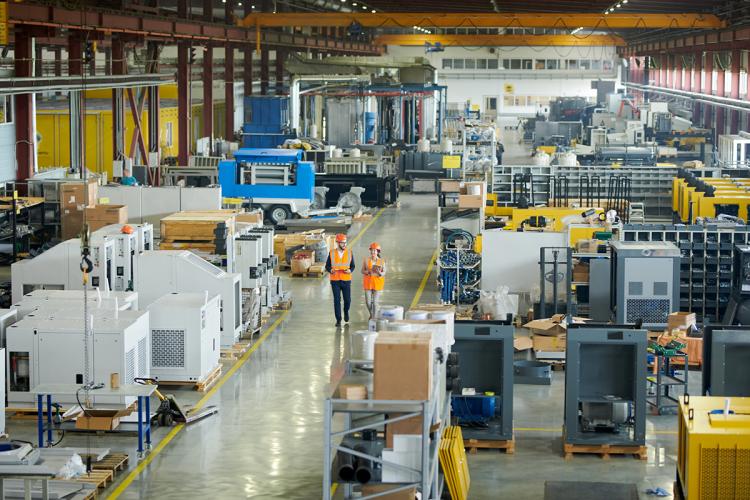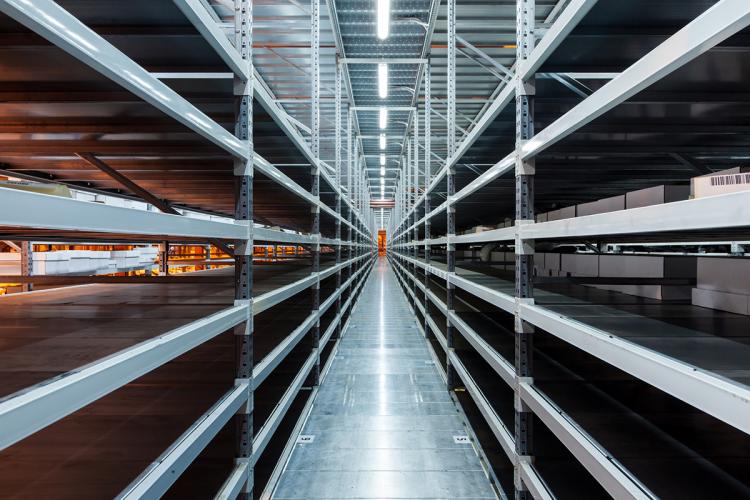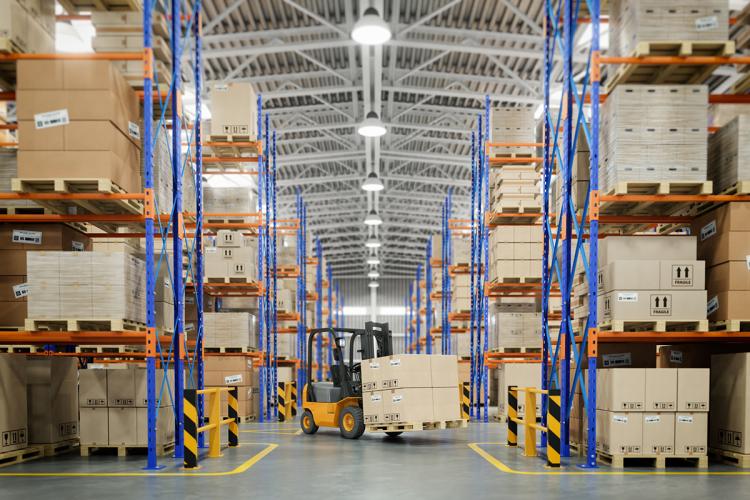Q&A: What Automakers Think About Saving Lighting Energy
Q&A: What Automakers Think About Saving Lighting Energy
Current, works with automakers and tier-one suppliers to improve energy efficiency in manufacturing and assembly centers, office spaces and other areas of the plant using LED lighting and controls solutions. This has given us special insight into what companies think about saving energy and how existing infrastructure can be leveraged to create new advantages.

Rudy Calderon, General Manager of Industrial Accounts at Current, works closely with OEMs and suppliers to bring new lighting installations to life. In this Q&A, we dig into his experiences within the auto sector and explore how the industry is approaching energy efficiency today.
Current: What is motivating automakers/suppliers to consider new lighting?
Rudy: I think the motivation is many things, but mainly there are plants that have gone untouched for years, where there’s a big opportunity to save energy and improve light output compared to the high-intensity discharge (HID) lamps you tend to find in industrial buildings. Not to mention a safe, well-lit workspace is something all employees appreciate, because it allows them to perform their jobs better. And while the auto market is strong, there’s a constant focus on taking dollars out of every vehicle produced. The trend is toward trucks and SUVs, and many OEMs are changing over their facilities to meet demand. In recent years, perhaps due to greater engine efficiencies and the relatively low cost of gasoline, the light/utility truck categories have performed well across the world. Consider that at the end of 2016, there were 15 plants running overtime in North America, with just two of those being non-truck plants. Only it’s about more than adding state-of-the-art equipment and automation; it’s about making buildings highly efficient at the same time. The discussions we’re having now are because customers want to achieve the absolute lowest operating cost and drive down their breakeven point. We often start by talking about how the best time to upgrade your lighting is when other facility improvements are already taking place. In fact, it’s the perfect time for LED.
C: Do you think plant owners are convinced of the value of LED?
R: Most automakers are building to an LED spec for all new construction moving forward, and virtually every retrofit project we touch is LED, so it’s safe to say the value has been demonstrated. I think customers tend to understand how the technology has come a long way in terms of lumen output, light quality and overall reliability. Still, you have those with concerns, particularly around lights going out and having that interrupt production. By and large, however, people are made comfortable when they see how LED fixtures built specifically for industrial environments are more than up to the task. Beyond this, lighting projects tend to be popular because they’re low-risk investments with a clear payback and measurable ROI. It’s not uncommon for a large facility to save $500,000 a year in lighting energy, and to prove it, you only need to point to the utility bill. In terms of a complete solution payback, this is often achieved within three to five years, or in some cases fewer than two. In the simplest terms, if you’re spending $20 million a year in lighting energy to produce 1 million vehicles and you can reduce that to $10 million, that’s 10 fewer dollars into every car, truck and SUV that rolls off the line, all without making a single modification to production.
C: What are automotive companies looking for in a lighting product?
R: They want to ensure the product perfectly fits their operating environment and can be applied at scale across many sites, and that their lighting needs can be met using the fewest number of fixture types. What they don’t want are 20 different fixtures from one supplier and 10 from another, or a lot of complexity in general. Other times, they want their own fixture bodies and lenses, their own controls and their own wiring that’s unique to them. Whether the solution already exists on a spec sheet or will be customized, understanding how every component is going to interact with the environment is important. For instance, some LED fixture housings use a seal that contains silicone, which can be prone to off gassing, so it becomes a consideration anywhere highly sensitive paints or finishes will be applied. We’re able to address this by making a minor modification to the seal material to eliminate silicone and, thus, the concern for the customer. Current has an installed base of hundreds of thousands of LED fixtures across the auto industry, and in my estimation, there is dramatically more attention being paid to the details of lighting products than ever before.
C: Are lighting controls part of this conversation?
R: Yes. More and more, we’re seeing major automakers move toward advanced controls. In fact, most lighting projects now include controls to some degree. In the past, facility engineers may have been underwhelmed by the performance of their system or even overwhelmed by its complexity, but it’s become much easier to commission a controls solution that works seamlessly with not only your fixtures, but your building automation system as well. Today’s controls are much more sophisticated and, in some cases, wireless. Whether you choose to manage lights individually or in groups, it’s that granular control companies are looking for, particularly where areas go unoccupied for hours at a time, and you want to switch those fixtures off. Using controls, some customers have achieved up to 20 percent additional energy savings on top of the savings they’re already seeing with LED.
C: What do plant operators like about lighting controls?
R: Dimming is probably the most sought-after feature. The ability to scale down any light to any output is a big thing for our customers. Certain work cells require more illumination than others, so it’s not just a “one-size-fits-all” proposition for your plant anymore. For instance, our LED fixtures at full output tend to provide more illumination than what’s needed, so instead, these may be task-tuned to 80 percent brightness. The difference in light levels is barely perceptible, and when you’re talking about hundreds or thousands of fixtures, the energy savings add up. In other areas, it might be enough to operate lights at 50 percent output, because the work performed in that bay doesn’t require bright light. And where it makes sense, fixtures can be programmed to quickly ramp up from 10 percent to full brightness when motion is detected. It all boils down to around-the-clock lighting optimization that wasn’t as feasible before LED and wireless controls platforms.
C: Can lighting controls grow with the needs of the facility?
R: The answer will change depending on the system selected, but as an example, our Daintree wireless controls work with more than just lighting. You can also control exhaust fans, thermostats, plug loads and other end points. In our talks, this tends to be the “aha moment” for customers when they start to imagine all the possibilities. A lot of buildings use a BMS/EMS of some kind, but just as many are without advanced controls. Most people don’t think about lighting controls as having a bigger impact on your operation, but this is changing. There are systems available that can provide the basic functionality of a traditional BMS/EMS without the higher level of investment. Many of these systems can also integrate directly with existing building management software via a BACnet protocol to enable even more powerful energy-saving strategies. My advice is to really take time to understand control systems. You might think, that’s just switching lights off and on, but it’s so much more.
C: Is the cost of a lighting and controls platform prohibitive?
R: I think negotiations will always happen, but pricing tends not to be an issue. On one hand, there’s a big push in the industry to invest in building improvements, and on the other, there’s money coming back from the savings these facilities are seeing. It’s a broad spectrum, but most plants can reduce lighting energy use by 50 to 80 percent a year as the result of a full LED and controls retrofit. Also keep in mind that some companies hold special funds in reserve for energy conservation projects, and we’ve found controls can make a difference in hitting the ROI targets that activate those dollars. The same is true for utility and energy rebates—we’ve seen returns increased by hundreds of thousands of dollars because of the impact lighting controls made.
C: What’s the biggest obstacle to a lighting installation in an automotive plant?
R: Scheduling, scheduling—and scheduling! Production being the focus of every plant, it can be difficult to squeeze a complete lighting retrofit into your plans. It’s not uncommon to target January to get started, only to see the project delayed until June due to increased demands on the factory. Automakers and parts manufacturers all share the same frustrations when it comes to making building improvements. That’s why it’s important to have a flexible lighting partner that can forecast on the front end, wait patiently for the right opportunity and be ready to execute in an instant. At the same time, LED is a long-term investment, so be sure to pick a partner that has the wherewithal to be around in 15 years to stand behind and support their products. Things happen, so when setbacks occur, you need a company that will be there for the long haul.
C: How are companies making these decisions today?
R: It depends on the organization. You might have a committee of 10 individuals and a chairperson responsible for the entire property portfolio, or it can be a single key decision-maker focused solely on energy optimization. Regardless of how operations are structured, the consistent theme is that energy savings in plants, warehouses and other industrial-sized spaces require multiple strategies and experts dedicated to seeing them through. The auto industry continues to emphasize plant efficiency as evidenced by all the work that’s been done, with much more to come. And with lighting, it’s LED and controls that are leading the way.
Learn how top automakers have already transformed their plants with LED lighting and controls.


